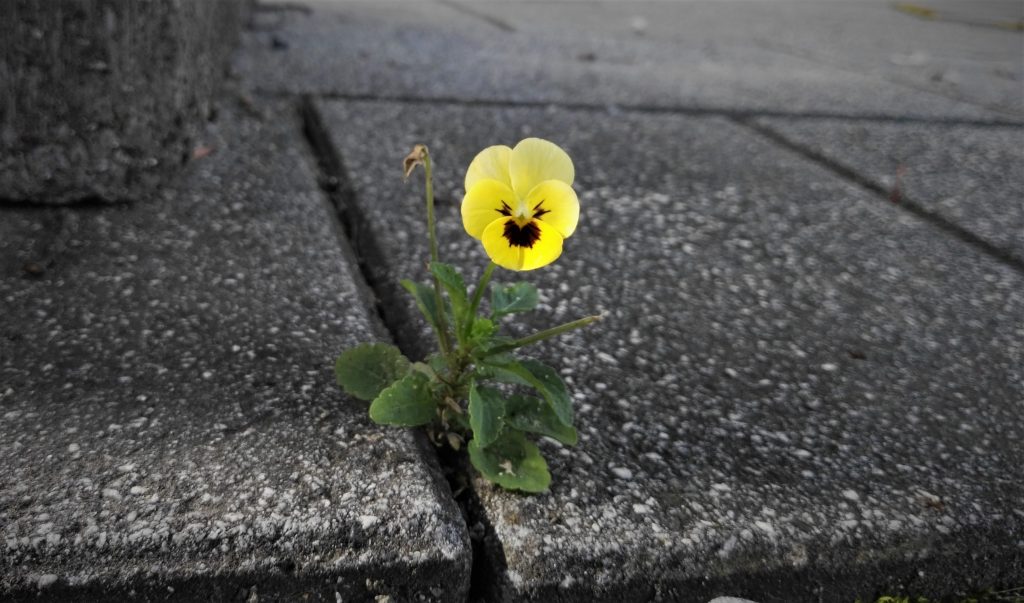Allgemein
Impervioused Surfaces
A common circumstance which often damages the environment is sealing.
Buildings of human origin are sealing more and more land. This creates impermeability of the affected soil. The soil life of such areas is usually dead or seriously disturbed. Sealing occurs because of buildings, asphalt / concrete surfaces or heavy compaction of the soil. Underground structures such as canals are also promoting.

The Situation in Austria
In Austria, an average of 12.9 ha of space per day were blocked between 2015 and 2017. In terms of ratio, Austria occupies the most space in Europe. However, according to statistics, the situation has improved significantly compared to the previous period, 2014 to 2016. Experts demand a space management with which can be worked strategically. Meanwhile, there are numerous campaigns which promote such and also encourage awareness among the population.
Environmental Damage due to Sealing
By sealing large areas, such as the construction of parking lots, a large area of valuable habitats for most animal and plant species is lost daily. The local ecosystem becomes unstable or, in the worst case, collapses completely.
Lack of Water
In addition, due to the rapid outflow of surface water, the remaining surfaces dry out much faster. Again, the ecosystem suffers from the consequences of sealing.
Human Problems
Due to the rapid surface runoff, it can lead to much higher floods because the underground as a storage medium is not available. Sealed surfaces prevent the infiltration of the water causing the groundwater level to suffer in the long term. Where the water reaches the soil at certain points, it flushes all pollutants (oil residues, tire abrasion, etc.) into a relatively small volume of soil, which severely impairs its filtration effect. Thus, the risk of contamination of groundwater rises sharply.
Further more, sealed surfaces are usually dark colored and absorb a lot of heat energy. In contrast to areas rich in vegetation, seals can hardly produce evaporation cold. As a result, the average temperature in larger residential areas and cities is rising. Here, ideal habitats for foreign animal and plant species (so-called neozoa and neophytes) are formed, which breed rapidly and are very competitive to domestic species and often displace them. Introduced species are, for example, the rose-ringed parakeet or the alianthus silkmoth.
Possible Solutions
The most effective solution would be to reduce surface sealing and to remove unused surfaces. Since this is hardly possible with today’s economic growth, compromises must be made.
Renaturation
As mentioned above, renaturation is one of the best steps. However, it is associated with high costs because the asphalt surfaces must be at least torn. However, if completely removed, valuable habitats, such as dry grassland or wet meadows, can re-emerge depending on the location. Usually, these newly created habitats are also quickly adopted by various wildlife and plants. Many associations are already dedicated to the renaturation of local areas and streams. Here is also the opportunity to get involved as a volunteer or donator.
Compensation Areas
Often a replacement habitat is created in the form of a compensation area. These are usually well received and offer, especially after a few years of service, a good retreat for various habitats. Just keep in mind that a small patch of compensation area can not replace 2 hectares of dry grassland. Many animals need a suitable minimum area to maintain a stable population.
Good Planning
Also a preventive method is a good spatial planning. Where to build something is regulated by law. The zoning plans supplement these and additionally regulate sealing, especially settlement development.
The Own Property
The above mentioned movements can usually be carried out only by appropriate institutions with legal approval. However, there are also opportunities for the ordinary people to counteract the surface seal. For example, it is much better for the soil to pave the driveway instead of asphalting. This ensures at least the infiltration of some rainwater. The ideal design would be to create a gravel or pure dirt road.
